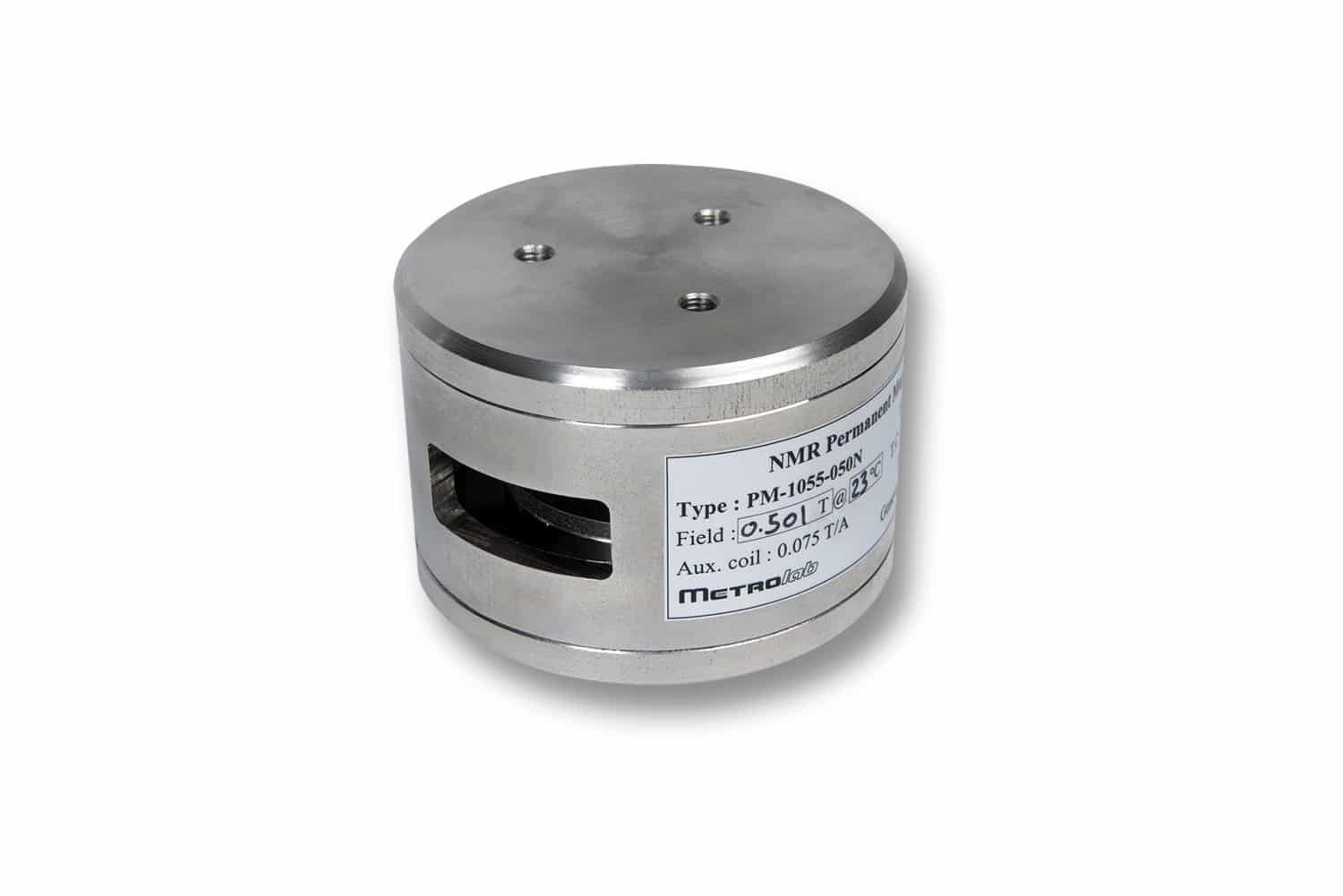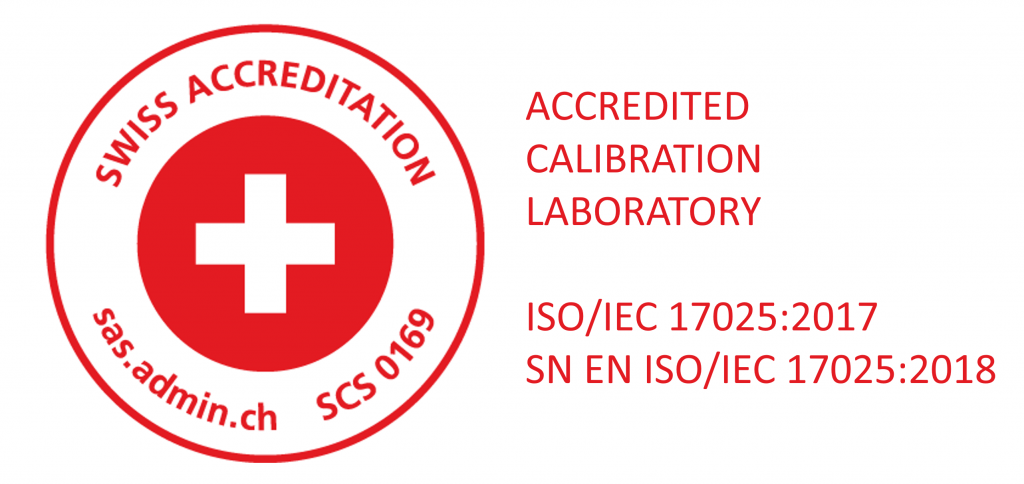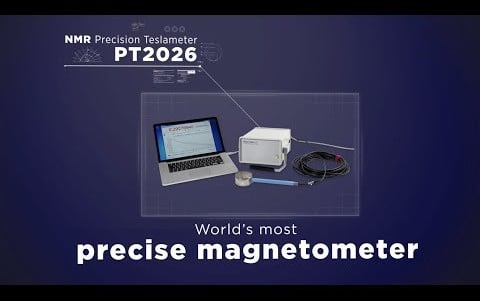PM1055 Permanent magnets
A reference magnetA magnet used for calibrating a magnetometer. Reference magnets are often controlled or even regulated by an NMR teslameter. More in the palm of your hand
Metrolab’s permanent dipole magnets are serious scientific instruments, in a deceptively small and elegant package. Available in fields from 0.01 to 0.5 T, they are remarkably compact, weighing just around a kg and measuring 80 mm in diameter and 39 mm (0.01 – 0.27 T) or 55 mm (0.5 T) high.
NMRNuclear Magnetic Resonance. A resonance phenomenon seen when you irradiate a sample in a magnetic field with an RF field.... More teslameterSee magnetometer. More testing
Hall device calibrationDuring calibration, the instrument reading is compared to one or more references to verify its accuracy. The references themselves need... More
Downloads
The magnetic field: more than meets the eye
Depending on the strength required, we use Ferrite, Samarium-Cobalt, or Neodymium-Iron-Boron as core material. The polePart of a magnet used to focus the flux in a gap. The pole face is the interior surface of... More face diameter is 50 mm, and the gapThe area between the two poles of a dipole magnet, where the magnetic field is concentrated. Also used to refer... More is 13 mm. The unique polePart of a magnet used to focus the flux in a gap. The pole face is the interior surface of... More shape and gapThe area between the two poles of a dipole magnet, where the magnetic field is concentrated. Also used to refer... More adjustment allow us to create a 12 mm uniformSee homogeneous. More region, capable of accepting NMRNuclear Magnetic Resonance. A resonance phenomenon seen when you irradiate a sample in a magnetic field with an RF field.... More probes. In spite of such tight requirements in an incredibly compact package, our design allows for two large openings (32 mm x 14 mm) for accessing the gapThe area between the two poles of a dipole magnet, where the magnetic field is concentrated. Also used to refer... More, as well as a small fringe fieldThe field around a magnet, not in the gap or bore. More.
NMR stabilization
All permanent magnets are sensitive to temperature. The strength of the core material itself decreases with increasing temperature, and thermal expansion changes the polePart of a magnet used to focus the flux in a gap. The pole face is the interior surface of... More gapThe area between the two poles of a dipole magnet, where the magnetic field is concentrated. Also used to refer... More and therefore the field. PM1055 magnets include an auxiliary coil to offset all driftThe gradual loss of an instrument's accuracy. NMR teslameters drift because their time base drifts; this can be easily checked and... More and to provide a perfectly stable field. If you stabilize the magnetic field with an NMRNuclear Magnetic Resonance. A resonance phenomenon seen when you irradiate a sample in a magnetic field with an RF field.... More teslameterSee magnetometer. More, the PM1055 becomes an ultra-compact reference magnetA magnet used for calibrating a magnetometer. Reference magnets are often controlled or even regulated by an NMR teslameter. More, stable to within a few parts per million.
Complete characterisation
After assembly, each PM1055 magnet is serialized and individually characterized with an NMRNuclear Magnetic Resonance. A resonance phenomenon seen when you irradiate a sample in a magnetic field with an RF field.... More PrecisionPrecision is how closely multiple measurements will be clustered. Also called reproducibility or repeatability. In everyday speech, often confused with... More TeslameterSee magnetometer. More. The exact field strength in the middle of the polePart of a magnet used to focus the flux in a gap. The pole face is the interior surface of... More as well as a few representative points near the periphery, the temperature at which the field strength was measured, the temperature coefficient, the characteristics of the auxiliary coil – everything is marked right on the label.
Fringe benefits
All magnets generate a fringe fieldThe field around a magnet, not in the gap or bore. More, or field outside the primary gapThe area between the two poles of a dipole magnet, where the magnetic field is concentrated. Also used to refer... More. You need to know the characteristics of the fringe fieldThe field around a magnet, not in the gap or bore. More not only to avoid sucking up nuts and bolts (potentially dangerous for yourself as well as the magnet), but also to avoid placing ferrous material where it affects the value of the field in the gapThe area between the two poles of a dipole magnet, where the magnetic field is concentrated. Also used to refer... More. Those lucky enough to own a Three-axisThe magnetic field is a three-dimensional vector quantity. A single Hall element only measures one component. A three-axis Hall instrument has... More Handheld MagnetometerAn instrument to measure magnetic flux density (B) or magnetic field intensity (H). More can of course easily map the fringe fieldThe field around a magnet, not in the gap or bore. More; others will be happy to receive Metrolab’s fringe fieldThe field around a magnet, not in the gap or bore. More characterization.
Interested in this product ?
Contact us for more information !






